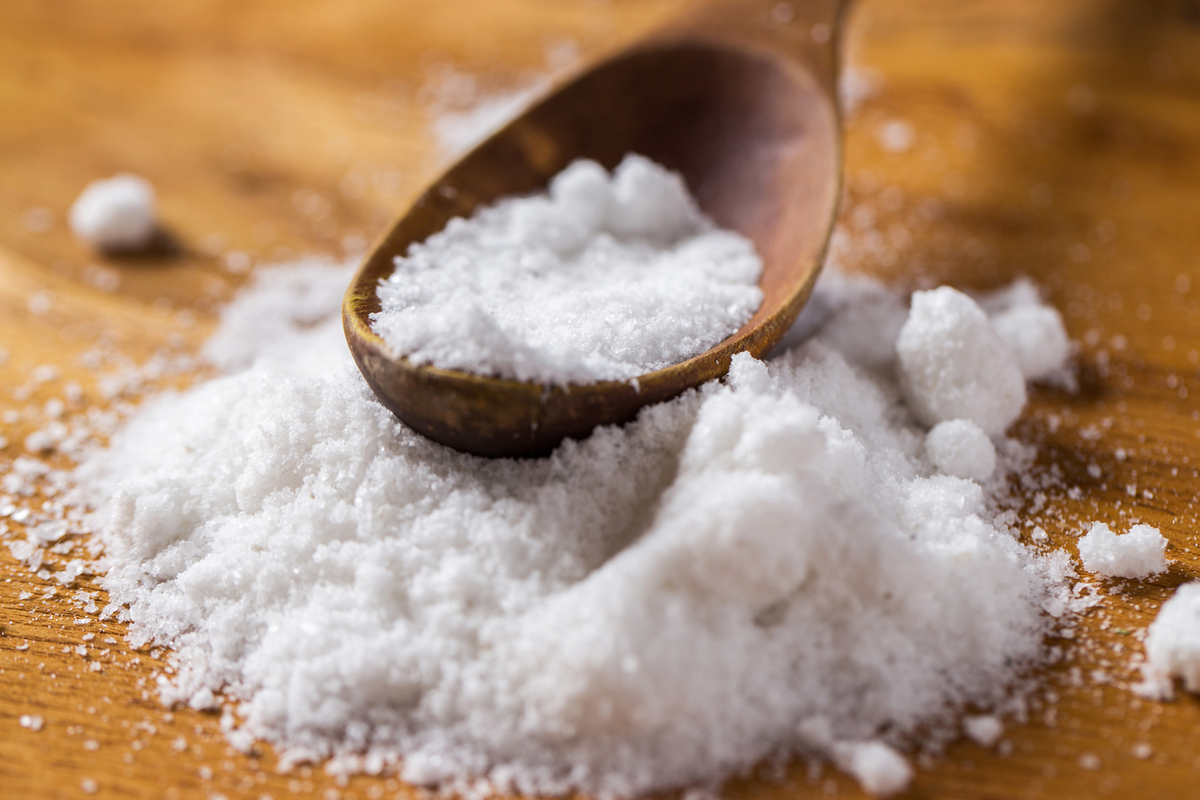Sodium — or just plain old "salt", if you prefer — has a terrible reputation. You certainly wouldn't be the first person to shun sodium because you've heard that "salt is bad", and depending on who you are, you may be doing your health an excellent service by watching your salt intake. Most Americans have diets excessively rich in salt, after all, and if you're one of them, you're increasing your risk of heart attack, stroke, and hypertension with every bite.

Head too far in the other direction, on the other hand, and you'll also have a problem. As an example, US hospital staff often take low-salt diets so seriously for their post-surgery patients that dangerously low sodium levels are common after surgery, especially for broken hips.
What roles does sodium play in your body?
"Sodium" and "salt" are often used synonymously in common parlance, but scientifically speaking, sodium, as an electrolyte mineral, is just one of the chemical compounds present in the table salt you consume. This mineral is well-known to attract water, which of course plays a rather important role all over the human body, and that's why it helps regulate your blood pressure, too. Sodium additionally plays an essential role in the functioning of your muscles and nerves. The importance of getting your salt intake right is perhaps best illustrated by a look at the potential consequences of dangerously high and low salt levels.
If you consistently consume too much sodium, like many people in developed nations across the world, you risk serious health complications that include:
- In the short term, swelling and bloating caused by water retention (the reason you fill icky after having a giant hamburger and fries), feeling rather thirsty as your body is screaming to be rehydrated, and increased blood pressure.
- Over the long haul, excess salt consumption can lead to hypertension, heart disease, and stroke. The kidneys suffer too when you eat too much of salt, and there is even some evidence that excess salt intake is bad for your bone health.
- Extremely high salt levels are called hypernatremia and are associated with dehydration. In this case, confusion, seizures, muscle spasms, coma, and death are all possible.
On the other hand, if you go to extreme lengths to decrease your sodium intake — often precisely because you were trying to avoid the potential bad outcomes associated with excess salt, you risk other consequences:
- Increased LDL cholesterol levels.
- A higher risk of developing insulin resistance and diabetes.
- If you happen to live with heart failure, a significant increased risk of dying from it.
- Very low levels of sodium, called hyponatremia, can lead to muscle spasms, headache, nausea, serious fatigue, and even hallucinations, disorientation, and coma.
How much salt should you eat to be healthy?
To cut straight to the chase, most reputable health organizations recommend consuming no more than 2,300 milligrams of salt a day, with 1,500 milligrams being the more ideal limit. Meanwhile, to function optimally, your body requires just under 500 milligrams of sodium a day — and therefore, if you don't dip under this amount as a healthy person without diagnosed medical conditions that may increase your need for sodium, you should be good to go. In the UK, the recommendations are worded differently, but amount to the same thing — Britons are advised to limit themselves to six grams of salt a day, or 2.4 grams of sodium.
How do you keep track of your salt intake?
If you never look at the nutritional labels that are present on the foods you buy at the grocery store, aim to change that. You do not have to calculate your sat intake precisely, because these nutritional labels actually offer a percentage of the recommended daily value. Add them up, and you'll soon know when you need to stop consuming foods high in sodium.
You may think you're doing an excellent job at limiting your sodium consumption if you are, to name one example from the meal I had tonight, skipping the added salt on your pasta. The pre-prepared pesto sauce you bought from the store, the olives and artichokes you added, and the Parmesan cheese you sprinkled on top may already be bringing you over the limit, however.
Seventy percent of the sodium Americans consume comes from prepared foods, whether that's meals you order from fast food joints, restaurants, and takeouts, or from the selection of processed foods you buy at the store. One of the very best ways to reduce your salt intake is to start preparing more of your meals from scratch, with meats, fish, vegetables, grains, and legumes rather than pre-prepared versions. Instead of salty peanuts or potato chips, choose fresh fruits or a carrot and some celery sticks with a home-made sour cream dip.
If you think you may be at risk for hyponatremia, especially after you've been put on an extremely low-salt diet after a surgery, however, you may want to consult your doctor to figure out how to add enough salt in your diet.
The bottom line is that you don't need much sodium — but you do require some. Your health depends on it.
- pubmed.ncbi.nlm.nih.gov/21731062/
- www.fda.gov/food/nutrition-education-resources-materials/sodium-your-diet#:~:text=Americans%20eat%20on%20average%20about,about%201%20teaspoon%20of%20salt!
- www.nhs.uk/live-well/eat-well/salt-nutrition/
- www.who.int/nutrition/publications/guidelines/sodium_intake_printversion.pdf


Your thoughts on this